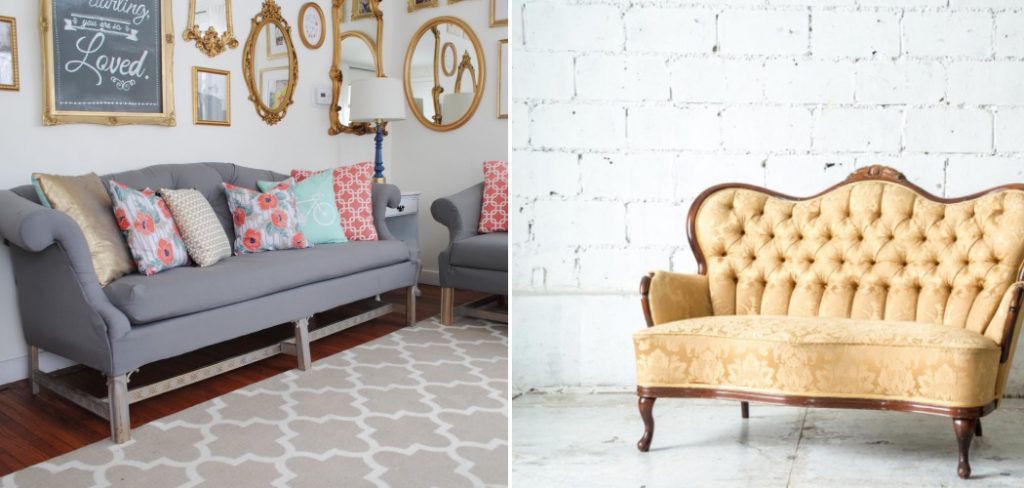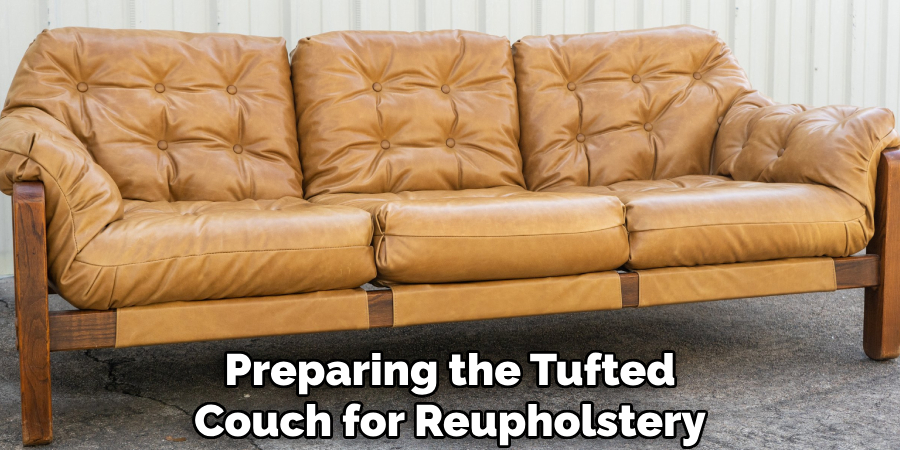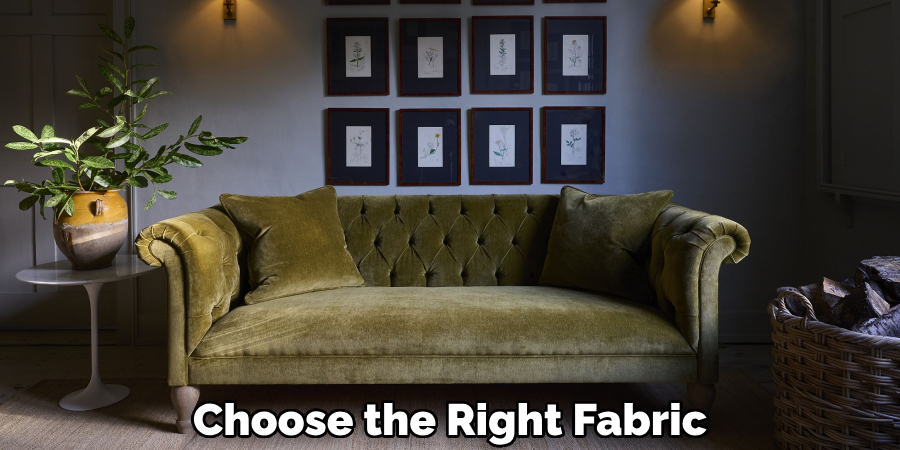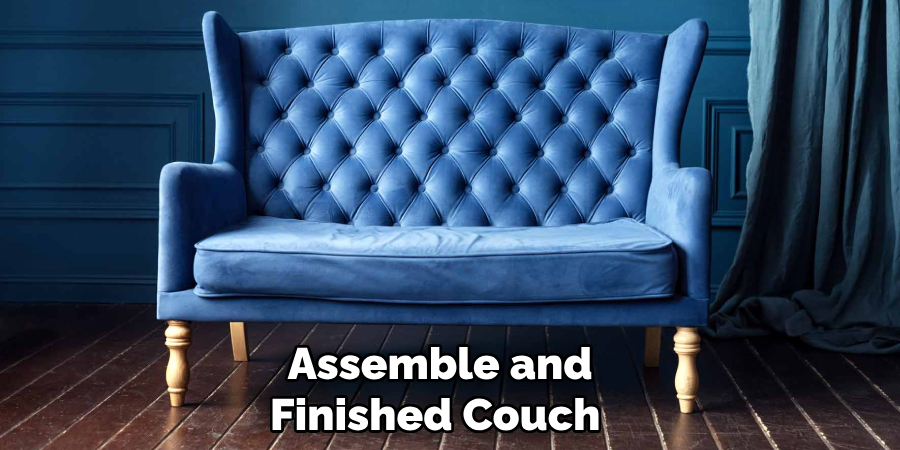Reupholster tufted couch can breathe new life into a beloved piece of furniture, allowing it to complement your décor while saving you the cost of buying a new couch. This process involves removing the old fabric, replacing padding if needed, and attaching new fabric while maintaining the tufted design. With the right tools, materials, and a bit of patience, even beginners can achieve professional-looking results.

This guide will walk you through the essential steps for how to reupholster a tufted couch into a refreshed and stylish centerpiece for your space.
Benefits of Reupholstering a Tufted Couch
Reupholstering a tufted couch offers numerous advantages that make it a worthwhile endeavor. Firstly, it allows you to preserve a piece of furniture that may hold sentimental value or superior craftsmanship compared to modern alternatives. Instead of discarding an outdated or worn couch, reupholstering breathes new life into it, making it environmentally friendly by reducing waste. Additionally, it provides the flexibility to customize the fabric, color, and texture to complement your space perfectly.
This means you can tailor your couch to fit evolving trends or your unique style. Reupholstering also tends to be more cost-effective than purchasing a brand-new tufted couch, especially if the structural framework is still in great condition. Lastly, by tackling the project yourself or working with a professional, you gain the satisfaction of transforming an old piece into a fresh, updated centerpiece for your home.
Materials and Tools Needed
Before embarking on your reupholstering project, gather all the necessary materials and tools to ensure a smooth process. Here’s a list of items you’ll need:
Materials
- Upholstery Fabric – Choose a durable fabric that matches your desired aesthetic and suits the tufted design.
- Foam or Batting – For replacing or reinforcing the cushioning under the fabric.
- Upholstery Thread – Strong thread suitable for tufting and securing fabric.
- Upholstery Buttons – If your couch features button-tufting, you’ll need matching or custom-covered buttons.
- Staples and Upholstery Tacks – Essential for attaching the fabric securely.
- Spray Adhesive – Used to keep foam or batting in place.
Tools
- Upholstery Staple Gun – A heavy-duty staple gun designed for upholstery tasks.
- Screwdriver or Drill – To remove the couch’s legs or components that may obstruct reupholstering.
- Fabric Scissors – Sharp scissors for cutting upholstery fabric precisely.
- Pliers or Tack Puller – For removing old staples and tacks from the existing upholstery.
- Tape Measure – To measure the dimensions of the couch and fabric accurately.
- Curved Upholstery Needle – For sewing tufted areas and threading buttons.
- Marking Chalk – Useful for marking measurements and tuft placement on fabric.
Having these materials and tools ready will streamline the process and ensure professional-looking results as you reupholster your tufted couch.
Preparing the Tufted Couch for Reupholstery
Before reupholstering your tufted couch, proper preparation is key to achieving excellent results. Start by removing any detachable components, such as cushions, legs, or armrests, using a screwdriver or drill if necessary. Set these pieces aside safely. Next, carefully strip away the old upholstery fabric, staples, and tacks using pliers or a tack puller. Be sure to work methodically to avoid damaging the frame or padding beneath the fabric.
It’s helpful to take photos or label the sequence of disassembly, as this can guide you when reassembling with the new fabric. Once the old fabric is removed, inspect the couch’s structure and padding. Repair any weak or damaged areas in the frame, and replace worn-out foam or batting to ensure a comfortable and sturdy result.

10 Methods on How to Reupholster a Tufted Couch
1. Evaluate Your Couch’s Condition and Prep
Before you begin, examine the couch to identify any issues such as broken springs, worn-out padding, or loose buttons. Understanding the scope of work will help determine the materials and repairs required.
- Tip: Take detailed photos of the existing tufting before removing any fabric. This will serve as a reference for reinstalling the tufts correctly.
2. Choose the Right Fabric
Fabric selection plays a major role in your project’s success. Look for materials that are durable, easy to clean, and aesthetically appealing. Velvet, linen, and polyester blends are popular for tufted couches.
- Tip: Purchase extra fabric, about 20–30% more than you think you’ll need, to account for mistakes or future repairs.

3. Remove the Old Upholstery Material Carefully
Using tools such as pliers and staple removers, start by stripping away the old fabric. Label and save the removed pieces as templates for cutting the new fabric later.
- Pro Tip: Wear gloves to avoid cuts from sharp staples and nails.
4. Inspect and Replace the Batting
Underneath the fabric, you’ll find the couch’s padding or batting. Over time, this material may degrade. Replace the batting with new, high-quality polyester batting to ensure a plush and even surface.
- Tip: Spray adhesive can help you keep batting layers securely in place.
5. Reinforce the Button Tufts
If you’re keeping the tufted design, reinforce or replace the tufting buttons. This step is critical for creating a polished look. Use heavy-duty thread and an upholstery needle for durability.
- Tip: Double-knot each thread to make the buttons more secure and prevent unraveling.
6. Cut and Mark Your New Fabric
Using the old upholstery pieces as templates, cut your new fabric. Make sure to mark where the button tufts will go by either using tailor’s chalk or cutting small notches.
- Pro Tip: Always cut slightly larger pieces to ensure there’s enough fabric to pull tightly during installation.
7. Install Button Tufting First
Tufting brings depth and sophistication to your couch, so this step requires precision. Sew the buttons through pre-marked holes or notches, pulling the thread tight to create deep tufts.
- Tip: Use a stapler or another holding mechanism to secure the thread underneath the couch frame for a neater finish.
8. Stretch and Secure the Fabric to the Frame
This process involves stretching your fabric over the couch, ensuring it is taut and smooth. Secure the fabric to the frame using a heavy-duty staple gun.
- Tip: Start stapling from the center and work outward to avoid wrinkles or uneven sections.

9. Add Decorative Trim for a Professional Touch
For extra refinement, use decorative trim or nailhead tacks to conceal any staples and elevate the couch’s appearance.
- Tip: Choose a trim that complements your fabric for a seamless, high-end look.
10. Reassemble and Inspect Your Finished Couch
The final step is to attach all the removed parts (like legs or cushions) and conduct a thorough inspection. Ensure all fabric seams are tight, tufts are deep, and the upholstery is secure.
- Tip: If any adjustments are needed, use a handheld steamer to eliminate creases or wrinkles in the fabric.
Things to Consider When Reupholstering a Tufted Couch
Before embarking on your reupholstery project, keep the following considerations in mind to ensure the process goes smoothly and yields professional results:
- Skill Level: Reupholstering a tufted couch can be a complex task, especially for beginners. Assess your experience and comfort with upholstery techniques before starting. Practice on smaller projects if necessary.
- Budget: Factor in the costs of fabric, tools, and additional materials like batting or adhesive. Allocate extra funds for unexpected repairs, such as replacing broken springs or damaged wood.
- Time Commitment: This type of project can be time-consuming, often requiring several hours or even days to complete. Ensure you have the available time to work methodically without rushing.
- Workspace: Choose a well-lit, spacious area for your project. Having enough room to maneuver fabric and tools will make the process easier and more efficient.
- Safety: Protect yourself with gloves, safety goggles, and other equipment while working with sharp tools and adhesives. Pay attention to proper lifting techniques when moving heavy furniture.
Keeping these considerations in mind will help you plan effectively and avoid common pitfalls during your reupholstery project.

Common Mistakes to Avoid
When reupholstering a tufted couch, it’s crucial to steer clear of common mistakes that could compromise the quality and durability of your work. Here are some pitfalls to watch out for:
- Skipping the Prep Work: Proper preparation, such as cleaning the couch and inspecting for damages, is essential. Overlooking this step can lead to uneven upholstery or unresolved structural issues.
- Not Buying Enough Fabric: Running out of fabric mid-project can disrupt your workflow and cause matching issues if you need to purchase more. Always buy extra fabric to account for mistakes or miscalculations.
- Ignoring Tufting Alignment: Misaligned tufts can make the final product look unprofessional. Double-check your markings and take your time during the tufting process to ensure consistency.
- Using Low-Quality Tools and Materials: Cheap tools and materials might save money upfront but can result in poor craftsmanship and a shorter lifespan for your couch. Invest in durable tools and high-quality fabric and batting.
- Improper Fabric Stretching: Insufficient tension when stretching the fabric can leave wrinkles, while overstretching may cause tears or distorted patterns. Work methodically to achieve a balanced, smooth finish.
Conclusion
Reupholstering a tufted couch is an ambitious but rewarding project that can breathe new life into your furniture while showcasing your craftsmanship. By following each step carefully, from removing the old fabric to installing the new upholstery with precision, you can achieve a professional-quality result. Thanks for reading our blog post on how to reupholster a tufted couch! We hope you found it helpful and informative.
you can also check it out Clean Coffee Off Couch
Huston Douthit is a distinguished figure in the world of furniture design, with a decade of expertise creating innovative and sustainable furniture solutions. His professional focus lies in merging traditional craftsmanship with modern manufacturing techniques, fostering designs that are both practical and environmentally conscious. As the author of Fruniturix, Huston delves into the art and science of furniture-making, inspiring artisans and industry professionals alike.
Education
- RMIT University (Melbourne, Australia)
Associate Degree in Design (Furniture)- Focus on sustainable design, industry-driven projects, and practical craftsmanship.
- Gained hands-on experience with traditional and digital manufacturing tools, such as CAD and CNC software.
- Nottingham Trent University (United Kingdom)
Bachelor’s in Furniture and Product Design (Honors)- Specialized in product design with a focus on blending creativity with production techniques.
- Participated in industry projects, working with companies like John Lewis and Vitsoe to gain real-world insights.
Publications and Impact
In Fruniturix, Huston shares his insights on furniture design processes, materials, and strategies for efficient production. His writing bridges the gap between artisan knowledge and modern industry needs, making it a must-read for both budding designers and seasoned professionals.


